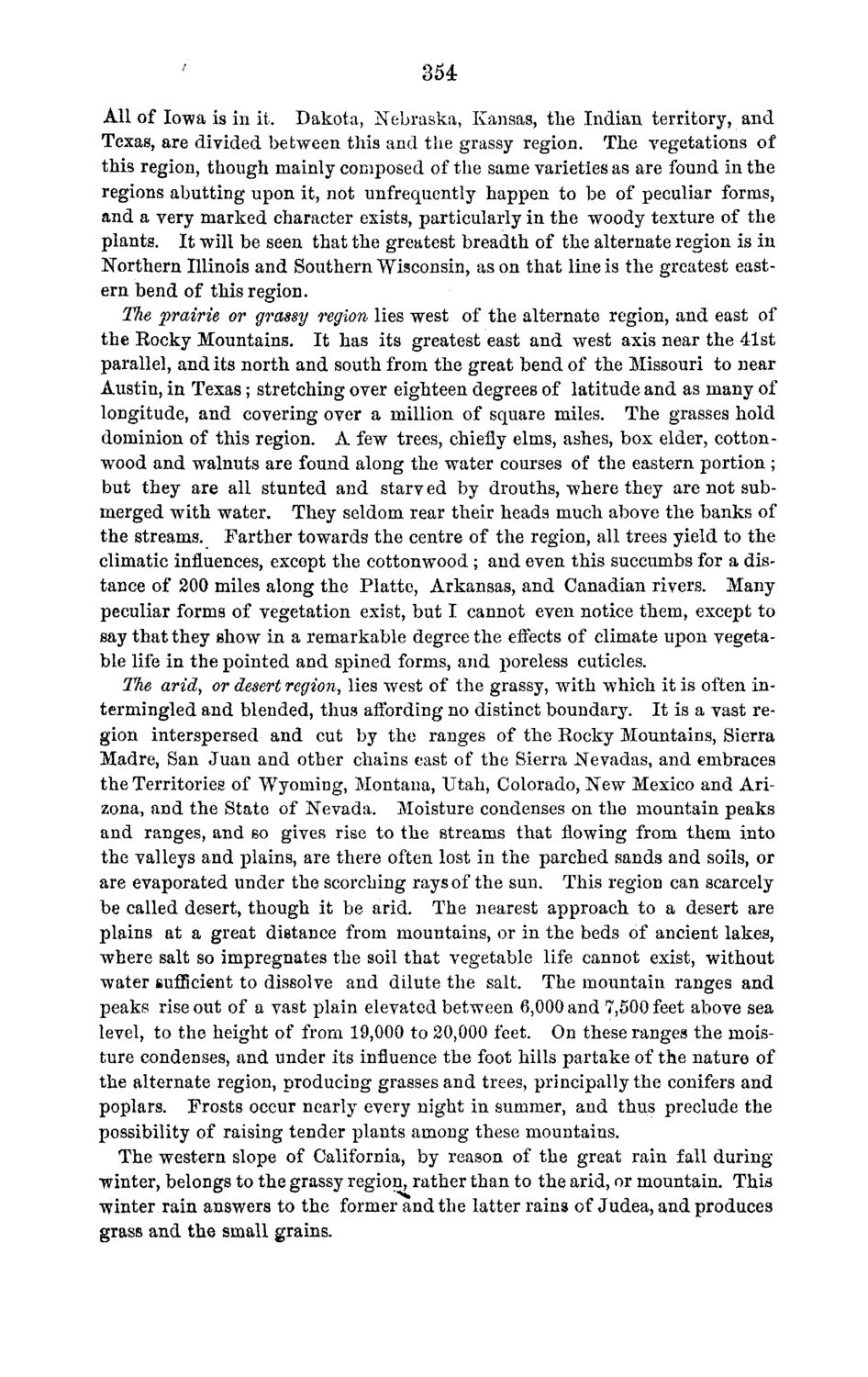| |
| |
Caption: Board of Trustees Minutes - 1870
This is a reduced-resolution page image for fast online browsing.

EXTRACTED TEXT FROM PAGE:
354: All of Iowa is in it. Dakota, Nebraska, Kansas, the Indian territory, and Texas, are divided between this and the grassy region. The vegetations of this region, though mainly composed of the same varieties as are found in the regions abutting upon it, not unfrequently happen to be of peculiar forms, and a very marked character exists, particularly in the woody texture of the plants. It will be seen that the greatest breadth of the alternate region is in Northern Illinois and Southern Wisconsin, as on that line is the greatest eastern bend of this region. The prairie or grassy region lies west of the alternate region, and east of the Rocky Mountains. It has its greatest east and west axis near the 41st parallel, and its north and south from the great bend of the Missouri to near Austin, in Texas; stretching over eighteen degrees of latitude and as many of longitude, and covering over a million of square miles. The grasses hold dominion of this region. A few trees, chiefly elms, ashes, box elder, cottonwood and walnuts are found along the water courses of the eastern portion ; but they are all stunted and starved by drouths, where they are not submerged with water. They seldom rear their heads much above the banks of the streams. Farther towards the centre of the region, all trees yield to the climatic influences, except the cottonwood; and even this succumbs for a distance of 200 miles along the Platte, Arkansas, and Canadian rivers. Many peculiar forms of vegetation exist, but I cannot even notice them, except to say that they show in a remarkable degree the effects of climate upon vegetable life in the pointed and spined forms, and poreless cuticles. The arid, or desert region, lies west of the grassy, with which it is often intermingled and blended, thus affording no distinct boundary. It is a vast region interspersed and cut by the ranges of the Rocky Mountains, Sierra Madre, San Juan and other chains east of the Sierra Nevadas, and embraces the Territories of Wyoming, Montana, Utah, Colorado, New Mexico and Arizona, and the State of Nevada. Moisture condenses on the mountain peaks and ranges, and so gives rise to the streams that flowing from them into the valleys and plains, are there often lost in the parched sands and soils, or are evaporated under the scorching rays of the sun. This region can scarcely be called desert, though it be arid. The nearest approach to a desert are plains at a great distance from mountains, or in the beds of ancient lakes, where salt so impregnates the soil that vegetable life cannot exist, without water sufficient to dissolve and dilute the salt. The mountain ranges and peaks rise out of a vast plain elevated between 6,000 and 7,500 feet above sea level, to the height of from 19,000 to 20,000 feet. On these ranges the moisture condenses, and under its influence the foot hills partake of the nature of the alternate region, producing grasses and trees, principally the conifers and poplars. Frosts occur nearly every night in summer, and thus preclude the possibility of raising tender plants among these mountains. The western slope of California, by reason of the great rain fall during winter, belongs to the grassy region, rather than to the arid, or mountain. This winter rain answers to the former and the latter rains of Judea, and produces grass and the small grains.
| |